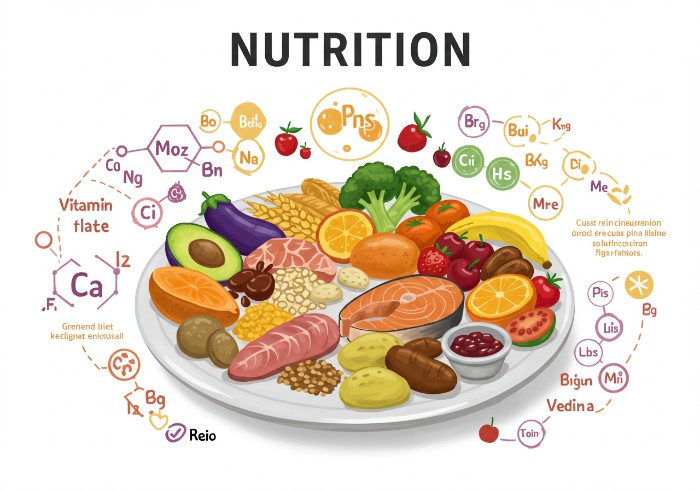Ever felt like your height missed the memo during puberty? You’re not alone—I’ve been there, staring at growth charts like they were fortune tellers, wondering if another inch might magically appear. And let me tell you, between internet “height growth secrets” and those late-night ads promising to increase your height by 5 inches in 30 days, it’s easy to get pulled into a rabbit hole of bad science and false hope.
But here’s the truth: height isn’t just about stretching or drinking more milk. It’s a complex mix of genetics, growth plates, hormones, and—believe it or not—things like bone density and the squishiness of your vertebral discs (yep, that’s a real thing). What I’ve learned over the years is this: if you’re trying to grow taller naturally, especially past your teen years, you’ve got to focus on what actually works—science-backed habits, not hype.
Now, let’s break down what really affects your height—and how to spot the myths before they waste your time.
Let’s be honest—you can’t out-supplement a bad diet, especially when it comes to height. I used to think just chugging milk or popping a multivitamin would magically add inches. (Spoiler: it didn’t.) What actually made a difference was dialing into the nutrients your bones and muscles need to develop properly—calcium, protein, zinc, and vitamin D are your heavy hitters here.
Now, if you’re relying on the typical American diet—think processed snacks, sugary cereals, fast food—it’s kinda working against you. These foods tank nutrient absorption, mess with your metabolism, and do nothing for bone mineralization or muscle growth. What you need instead are whole, real foods.
Stuff like plain Greek yogurt (I’m partial to Chobani, but Dannon’s Light & Fit isn’t bad either), fortified cereals like Kashi, and eggs, salmon, chickpeas, even pumpkin seeds—these are all part of what I call a solid height-boosting diet. And don’t overlook Nature Made vitamin D if your sunlight exposure sucks (like mine does in the winter).
What I’ve found? When you consistently fuel your body right, especially before you hit full skeletal maturity, your chances of growing taller naturally go way up. It’s not a magic trick—just biology that finally has what it needs to do its job.
If there’s one thing I wish someone had drilled into my head sooner, it’s this: you literally grow in your sleep. Not just in theory—your pituitary gland releases growth hormone in pulses, mostly while you’re deep in REM sleep, tucked into the middle of your circadian rhythm. And if you’re skimping on sleep? Yeah… your body notices.
Now, according to the CDC, teens need 8–10 hours a night (though honestly, I think most need closer to 9), and adults still need 7–9 hours to keep hormone production in check. I remember trying to “catch up” on weekends after 5-hour nights during the week—turns out, your body doesn’t work like a bank account. Sleep deprivation messes with your hormonal secretion, big time.
I’ve also tried melatonin supplements (not all the time, just when I’m jetlagged or stressed out), and while they help cue your bedtime routine, they’re no replacement for actual sleep hygiene—like keeping your room cool and screens off an hour before bed.
What I’ve found is this: If you’re looking for the best time to sleep for height, it’s not just “early”—it’s consistent. Same time, every night. Your hormones crave routine way more than hustle.

I swear, the first time I started stretching consistently—like really committing to it every morning—I actually felt taller by noon. And no, that’s not just in my head. Spine decompression is real, and when you stretch out those compressed intervertebral discs after a long night (or day) of gravity squashing you down, your posture literally opens up.
Daily stretching routines that focus on mobility and core alignment are endorsed by so many US chiropractors and PTs for a reason. We’re not talking about contortionist yoga here—just 10–15 minutes a day can make a difference. I usually start with basic cat-cow flows, overhead stretches, downward dogs, and a bit of foam rolling (the Gaiam roller is solid, but I’ve used Manduka yoga mats for years—they’re worth the splurge).
Morning stretching helps you reset your posture for the day, but evening sessions—especially if you’ve been hunched over a desk—really let your spine breathe. What I’ve found is, when you move like someone who’s tall, your body starts aligning like one too. You’re not just chasing height—you’re training it into your posture.
You’d be surprised how much height most people lose to bad posture. I mean it—tech neck, forward head posture, and that lazy slouch we all slip into (especially after scrolling for hours) can easily rob you of an inch or two. When your cervical alignment and spinal curve are off, your whole frame compresses. You don’t just look shorter—you feel shorter too.
I learned this the hard way during college. I was hunched over a laptop every day until I caught my reflection one morning and thought, “Wait, when did I start looking… smaller?” That’s when I started focusing on standing posture—shoulders back, chin tucked slightly, core engaged. I even invested in an ergonomic chair from Herman Miller (pricey, but honestly a game-changer) and adjusted my screen height to eye level.
If you’re working long hours, try setting posture reminders or using a posture brace temporarily while you rebuild muscle memory. Over time, proper lumbar support and consistent awareness can completely transform how tall and confident you appear. Because here’s the truth: you don’t always need to grow taller—you just need to unfold the height you already have.

I’ll be honest—some of the tallest people I’ve ever met grew up playing sports like basketball, volleyball, or swimming. And it’s not just genetics doing the heavy lifting. These sports naturally stretch your spine, boost your range of motion, and encourage better core stability. Every jump, dive, reach, or sprint trains your body to extend—not compress.
Back in high school, I joined a YMCA swim program not because I thought it would make me taller (I just liked the pool), but something changed. My posture improved, my shoulders opened up, and I started walking taller—literally. Same thing goes for AAU basketball kids; those repeated vertical jumps, constant stretching, and cardiovascular endurance training? That stuff adds up.
What I’ve found is, an active lifestyle does more than build muscle. It triggers better hormonal balance, especially in your teens, and shapes your body frame to grow upright, not slouched. You don’t need to go pro—just stay consistent. Play a sport that makes you move tall, and your body starts catching on. That’s the real trick behind those “sports height increase” stories you hear. Most of them? They’re rooted in real movement.
Here’s something most people completely overlook when trying to grow taller: your spine needs water. Like, a lot more than you think. Your spinal discs—those squishy cushions between your vertebrae—are mostly made of water, especially the nucleus pulposus at the center. When you’re dehydrated (which, let’s be honest, most Americans are), those discs start to compress, and yep, you actually lose height—even if just temporarily.
Now, the problem? We’re chugging soda, coffee, energy drinks… anything but water. The average teen or adult in the U.S. drinks way more sugary stuff than what your spinal fluid actually needs to stay balanced. And you feel it—tight back, shorter stature by the evening, maybe even a stiff neck from poor osmotic balance.
What’s helped me stay on track is using a water tracker like Hydro Coach or just logging cups in MyFitnessPal. Even a sticky note reminder helps. And don’t forget your electrolytes—a little sea salt or coconut water goes a long way with water retention.
What I’ve found is this: when you hydrate consistently, you don’t just feel better—you stand taller. It’s one of the easiest height hacks no one’s talking about.
You’d be surprised how everyday choices can contribute to stunted growth—and I mean the subtle stuff you shrug off. Vaping and nicotine blunt adolescent development (they interfere with blood flow and hormones). Energy drinks and high caffeine intake spike cortisol, raise oxidative stress, and disrupt sleep—three things that hurt epiphyseal plates when you’re still growing. Junk food? It’s not only empty calories; poor nutrition amplifies skeletal stress and inflammation, which slows height-friendly processes.
Heavy backpacks and constant slouching cause chronic spinal compression, so yeah—carrying too much weight daily literally squashes your posture. And overtraining without recovery does the same in another way: it creates hormonal imbalance and prevents proper repair. What I’ve found (after some dumb mistakes in my teens) is simple: reduce nicotine/caffeine, swap junk for nutrient-dense meals, lighten your load, and prioritize rest. These habits protect your growth window much better than any quick-fix.
I’ve lost count of how many “grow taller pills” I’ve seen pop up on my feed—Height Growth Maximizer, Ashwagandha blends, L-arginine stacks, all claiming to unlock inches like it’s some kind of cheat code. Now, here’s the thing: some of these ingredients aren’t totally bogus. Certain amino acids like L-ornithine and L-arginine can support IGF-1 (a growth-related hormone), and herbal extracts may help with stress or sleep—but that doesn’t mean the bottle is magic.
In the U.S., supplements aren’t FDA-approved like medications. That means no guarantee they’re safe, effective, or even contain what the label says. (I’ve seen products with flashy labels and zero clinical trials behind them—it’s frustrating.)
What I’ve found is this: natural growth enhancers can be a supportive tool, if you’re already doing everything else right—good sleep, clean diet, consistent movement. And always, always check for third-party testing and be skeptical of brands that promise overnight results. Growth doesn’t come in a capsule. But if you’re smart about it, supplements for height can fill gaps—not miracles.
At some point, we all type “how tall will I be” into Google like it’s a magic crystal ball. I definitely did—probably more than once. But here’s the thing: your genetics set the blueprint, and understanding that early can save you a lot of second-guessing (and money on gimmicks). Your DNA inheritance—from both parents—determines the range you’ll fall into, but growth rate, hormones, and environment decide how close you get to that upper limit.
In pediatric clinics, they often use height prediction calculators and CDC growth charts to track your percentile over time. That’s not just numbers—it gives you a real picture of where your growth potential is headed. In some cases, doctors even use bone age tests to see if your epiphyseal plates (growth plates) are still open or starting to fuse—a major clue about whether you’ve still got inches left to gain.
What I’ve found is that once you know your timeline, you can train smarter—not just harder. You’re not fighting your genes; you’re working with them. Track your height. Check your family history. And stay consistent during those windows when your body’s still building. That’s where the real gains happen.